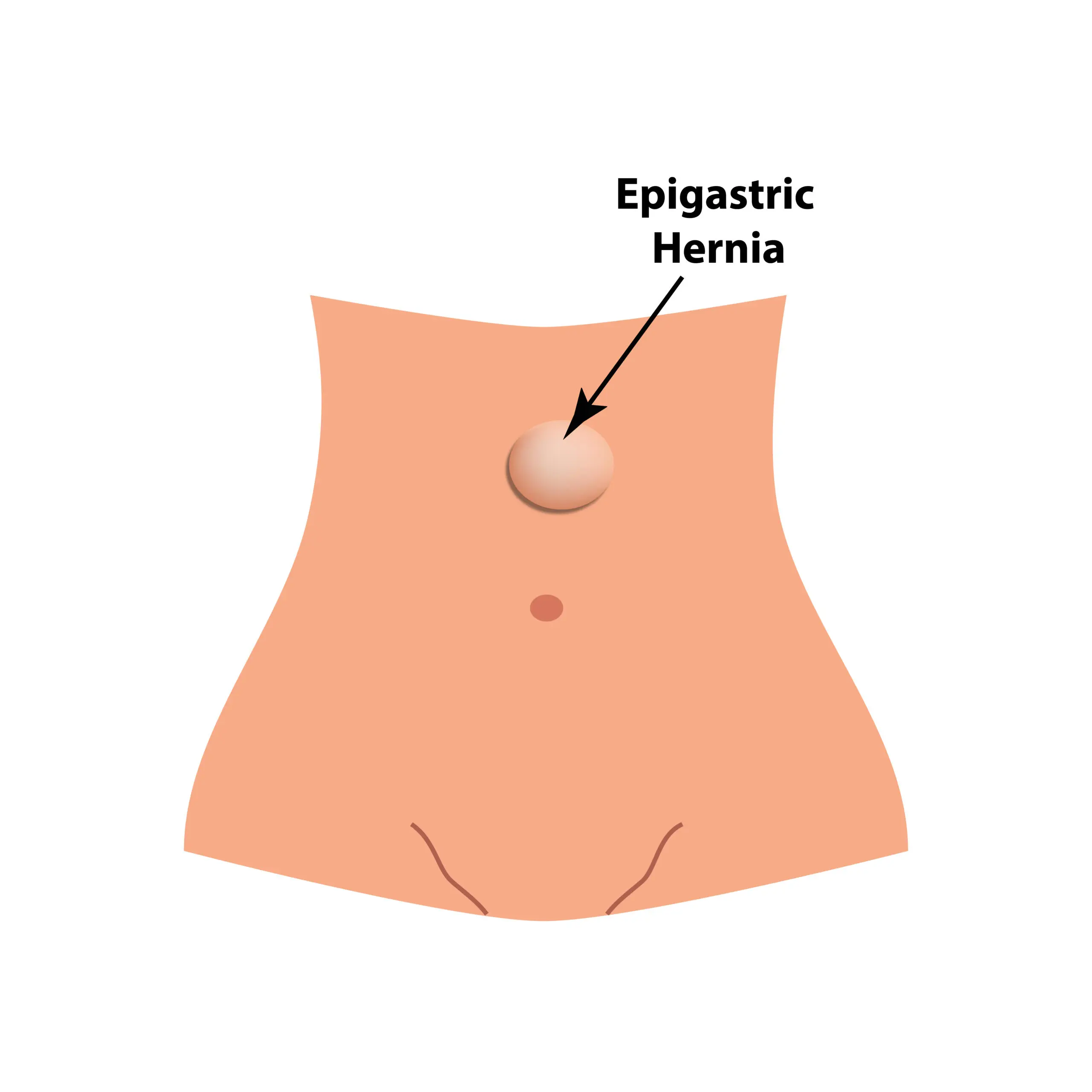An epigastric hernia is a condition where a part of the upper abdomen, which lies between the chest and the belly button, forms a small, outward bulge. It happens when a weakened portion of the abdomen allows for the tissues or fat to push through.
Risk factors of Epigastric Hernia
Epigastric Hernia is caused due to many factors. Some of the common risk factors that increase your chances of developing an epigastric hernia include:
- Previous surgeries
- Abdominal injuries
- Genetic defects
- Strenuous physical activity, such as lifting weights
- Chronic coughing
- Obesity
- History of hernia
- Pregnancy
The condition can occur in children as well as adults. In infants, they may be present since birth. Among adults, the risk could increase with age.
Symptoms of Epigastric Hernia
In most epigastric hernia cases, a small, protruding bulge forms in the upper abdomen. However, this sign may not always be noticeable. It may become lucid when the person affected is coughing, crying, sitting, standing for long durations, or experiencing abdominal strain.
The affected area could emanate a dull ache that worsens through the day or sharp pain that develops immediately. Apart from this, doctors also look for signs such as tenderness and redness. In some cases, a person may also develop more than one hernia.
Most hernias can be diagnosed with a physical examination. The condition affects children as well as adults. If you notice a small abdominal bulge or pain, consult your doctor.
How to cope with Epigastric Hernia?
Epigastric hernias do not heal on their own. They require medical attention, and the most common way of treatment is surgery.
If an infant has had an epigastric hernia since birth, the condition is left untreated until the child grows up. Surgery is performed when they are older, so they can tolerate it better.
As for adults, they could be suffering from epigastric hernia long before the symptoms appear. In some cases, hernias do not cause pain, and thus, years could pass by without the patient noticing them. The treatment, as with children, is surgery.
There are two types of surgeries available for epigastric hernia – open surgery and minimally invasive surgery. During open surgery, the mass is manually pushed back into place. If required, they may also place a mesh in the affected area to support it. Recovering from open surgery may take several weeks.
Minimally invasive surgery, meanwhile, involves using a laparoscope and a special gas. A mesh will be inserted, if necessary. This technique results in less scarring and quicker recovery. Your physician will be able to better determine which procedure is suitable for you.
An incarcerated hernia, or a hernia that remains in the out position, demands immediate attention. If left untreated, it could turn into a strangulated hernia. This condition is signified by the affected tissue turning red or purple, accompanied by signs such as nausea, swelling, diarrhoea, and more.
After surgery, the patient should avoid any activities that lead to abdominal pressure. The area of surgery must be protected during sneezing, coughing, crying, vomiting, or other such activities.



